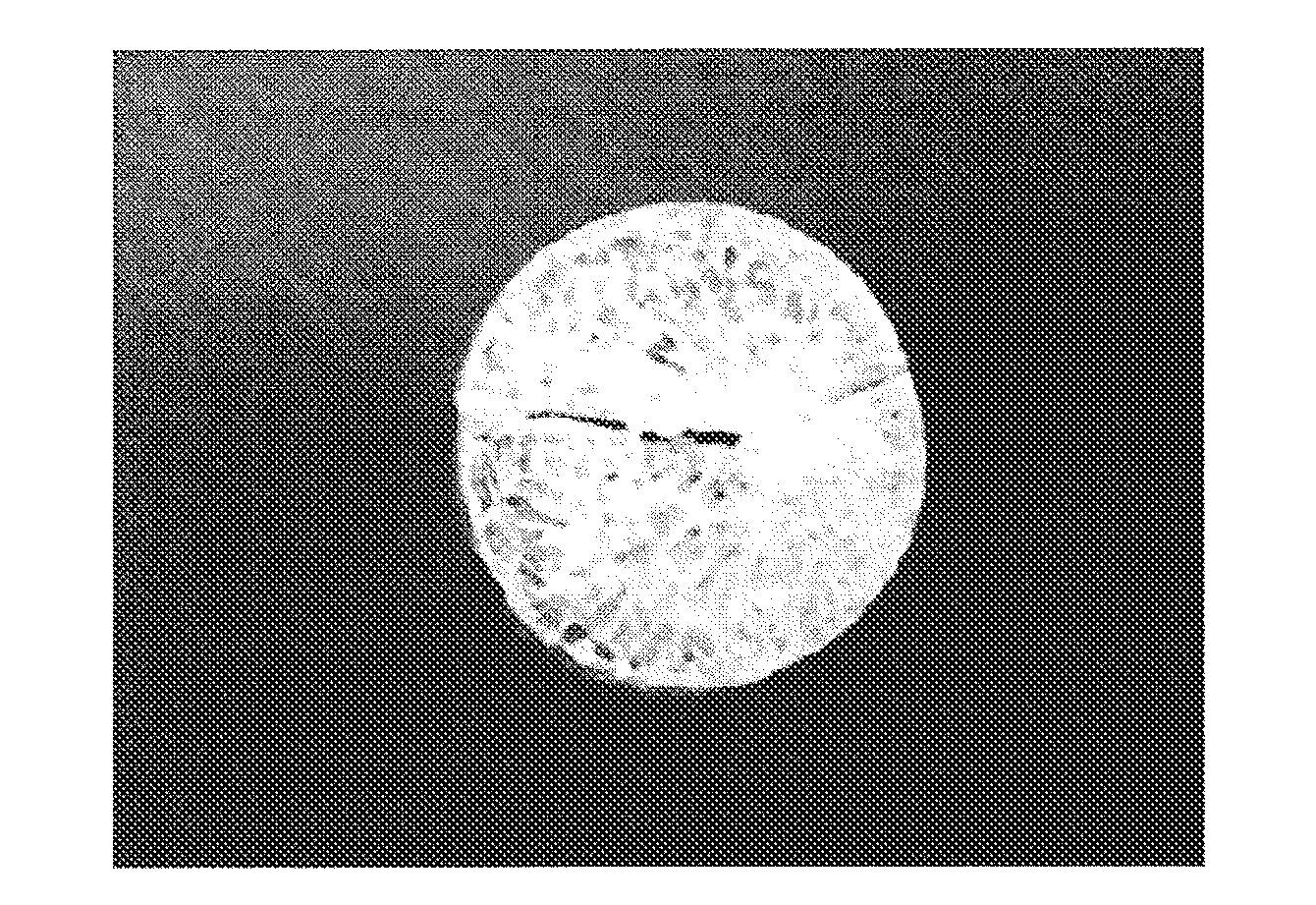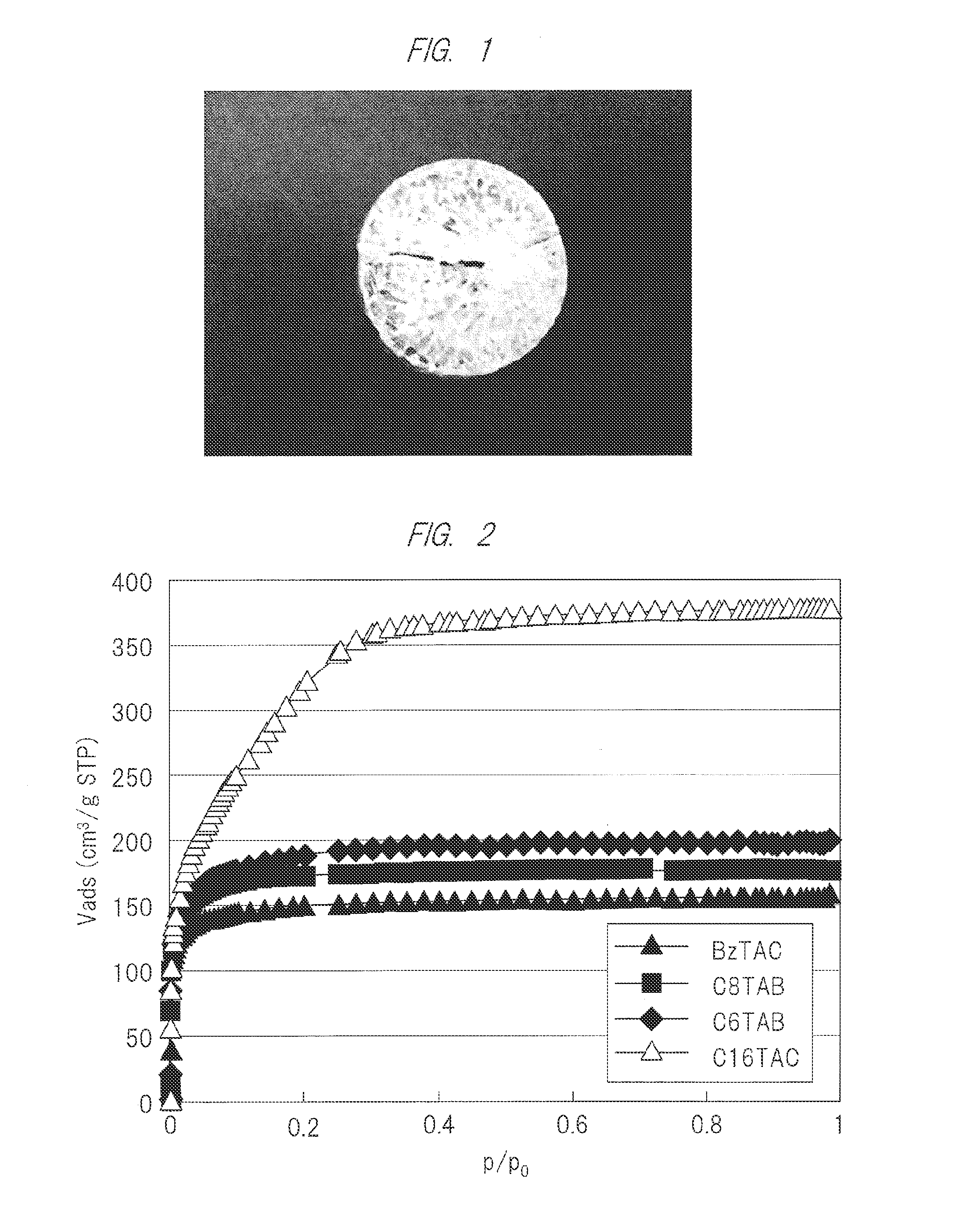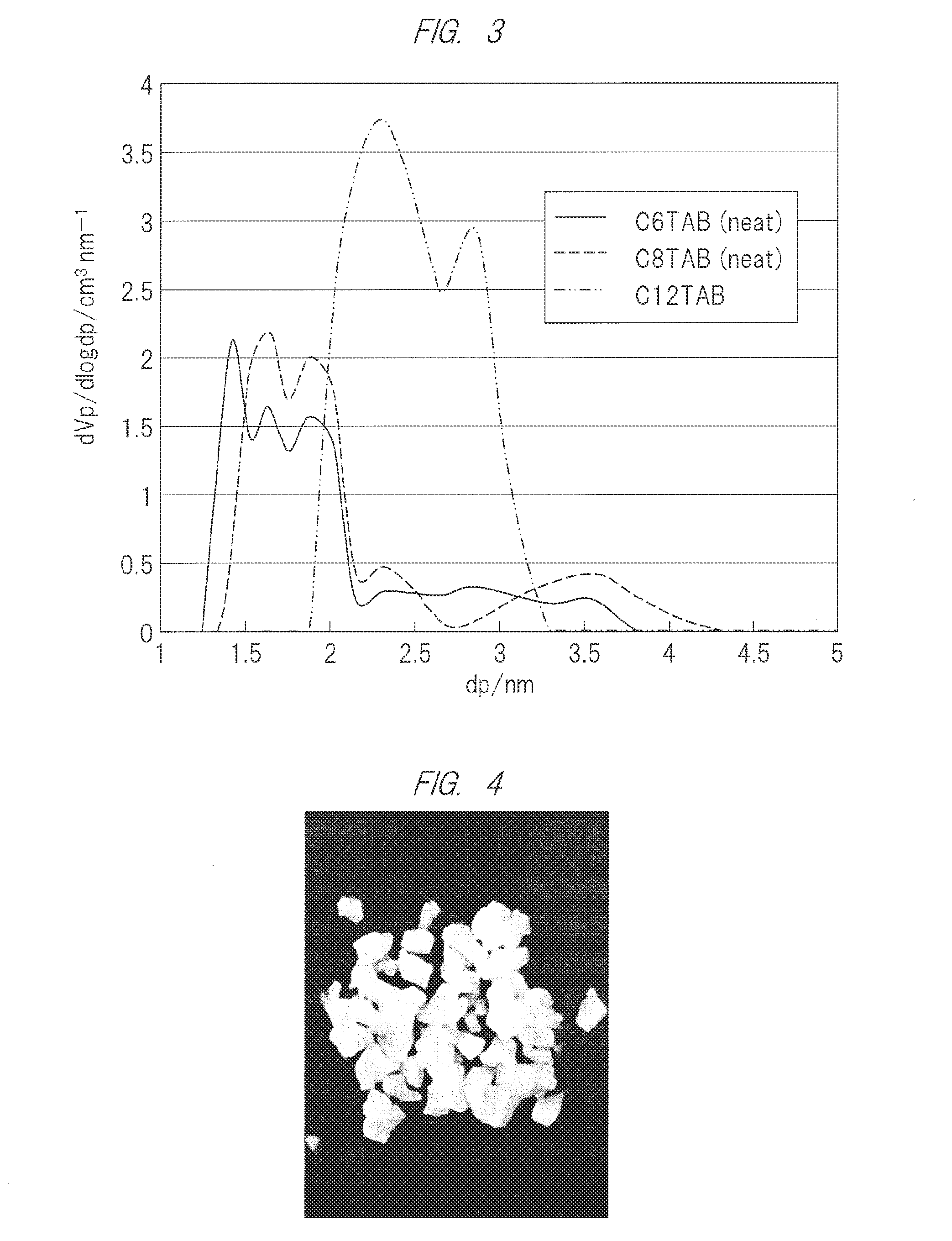Process for producing porous silica, and porous silica
a technology of porous silica and silica, which is applied in the direction of silicon compounds, molecular-sieve silica-polymorphs, ceramicware, etc., can solve the problems of reducing the ability of micelles to form in water, the inability to use cationic surfactants under the reaction condition, and the cost of raw materials and facilities, so as to reduce the diameter and reduce the effect of pore siz
- Summary
- Abstract
- Description
- Claims
- Application Information
AI Technical Summary
Benefits of technology
Problems solved by technology
Method used
Image
Examples
embodiment 1
[0053]In the present invention, an alkoxysilane and a cationic surfactant are mixed without a solvent, and water is added as a reaction agent to adjust pH, thereby gelating the resulting precursor solution.
[0054]The pH of the water added is desired to be adjusted to 2 of an isoelectric point of alkoxysilane. Since the hydrolysis rate of the alkoxysilane and the gelation rate of silicate ions are the slowest at the isoelectric point, it is possible to get time sufficient for micelle formation of the surfactant. At pH 0 to 1, though the hydrolysis is accelerated, the similar effect can be obtained because of the sufficiently low gelation rate of silicate ions. Therefore, it is required that pH of the water added is adjusted within the range of 0 to 2. At pH 3 or higher, since the hydrolysis rate and the gelation rate are too high, and it cannot be secure sufficient time for dissolution of the surfactant and the micelle formation, mesoporous silica having the desired pore structure can...
example 1
Synthesis of Monolithic Mesoporous Silica
[0083]As a silica source, 8 g of tetraethoxysilane (TEOS) (0.038 mol; 1 eq) was added in a polypropylene container, and then, a surfactant, any one of hexadecyl trimethylammonium chloride (C16TAC), octyl trimethylammonium bromide (C8TAB), hexyl trimethylammonium bromide (C6TAB), or benzyl trimethylammonium chloride (BzTAC) was dispersed in an amount of 2.4 g (in the case of C16TAC, 0.0075 mol; 0.2 eq), and stirred. Then, 2.74 g of water of which pH is adjusted to 2 with hydrochloric acid (0.152 mol; 4 eq) was added and stirred at room temperature. The hydrolysis of TEOS had proceeded during one hour stirring, and the surfactant dissolved. This solution (precursor solution) was maintained at room temperature or 60° C., and continuously stirred or placed. Gelation was completed after 12 hours to several days, and the whole solution was gelated with visually-colorless transparency. The gel was dried at 60° C. and calcined at 600° C. for 3 hours ...
example 2
Synthesis of Monolithic Mesoporous Silica Nanoparticles by Adding PEG
[0084]As a silica source, 8 g of TEOS (0.038 mol; 1 eq) was added in a polypropylene container, then, either of C16TAC, C8TAB, and C6TAB was dispersed in an amount of 2.4 g (0.0075 mol; 0.2 eq), and further added polyethylene glycol (average molecular weight 1000; 7.5 g) and stirred. Then, 2.74 g of water of which pH is adjusted to 2 with hydrochloric acid (0.152 mol; 4 eq) was added and stirred. The hydrolysis of TEOS had proceeded during 1 hour stirring, and the surfactant and the polyethylene glycol dissolved. This solution was maintained at room temperature or 60° C., and then stirred or placed. Gelation was completed after 12 hours to several days, and the whole solution was gelated with visually-colorless transparency. The gel was dried at 60° C. and calcined at 600° C. for 3 hours to remove the surfactant and the polyethylene glycol. As shown in FIG. 4, the obtained mesoporous silica was white and monolithic...
PUM
| Property | Measurement | Unit |
|---|---|---|
| Diameter | aaaaa | aaaaa |
| Diameter | aaaaa | aaaaa |
| Nanoscale particle size | aaaaa | aaaaa |
Abstract
Description
Claims
Application Information
 Login to View More
Login to View More - R&D
- Intellectual Property
- Life Sciences
- Materials
- Tech Scout
- Unparalleled Data Quality
- Higher Quality Content
- 60% Fewer Hallucinations
Browse by: Latest US Patents, China's latest patents, Technical Efficacy Thesaurus, Application Domain, Technology Topic, Popular Technical Reports.
© 2025 PatSnap. All rights reserved.Legal|Privacy policy|Modern Slavery Act Transparency Statement|Sitemap|About US| Contact US: help@patsnap.com



